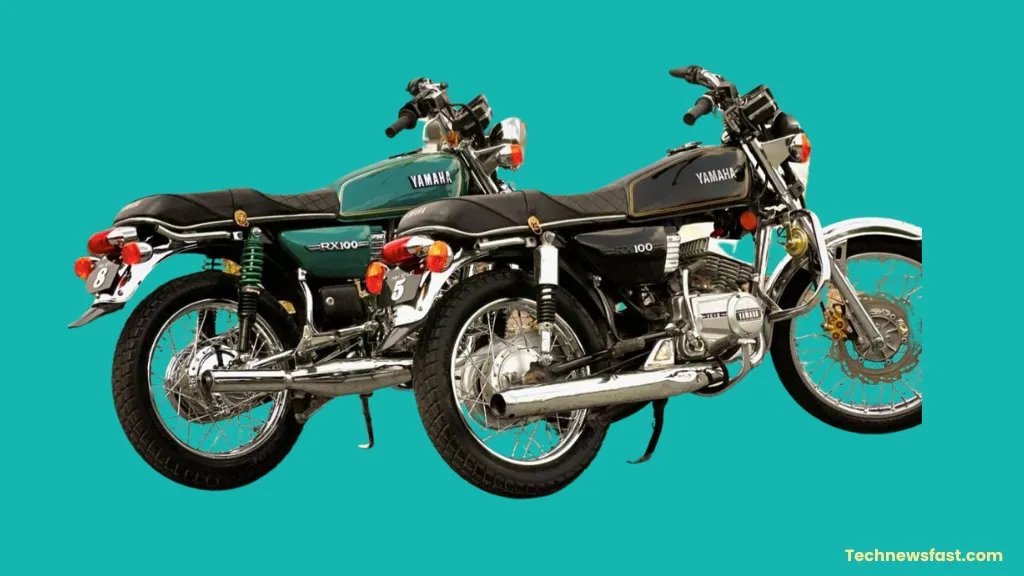The Yamaha RX 100 is more than just a motorcycle—it’s a memory on wheels for anyone who grew up watching these icons roar down the street. If you’re reading this, you might be caught between nostalgia and curiosity, wondering if the RX 100 really lives up to its legendary status or if it’s just a rose-tinted relic of the past. Today, I’ll break down what makes this lightweight two-stroke machine so beloved, how it performs in real life, and whether it’s still a smart buy in 2025. Let’s dig into the power, quirks, costs, and real ownership experience.
Why the Yamaha RX 100 Stands Out: Design, Engine, and Legacy
Timeless Looks and Practical Design
The RX 100’s silhouette is instantly recognizable—clean lines, chrome fenders, a round headlamp, and an upright stance. There’s nothing flashy. Instead, it’s all about that honest, retro appeal. The bike’s analog dials, wire-spoke wheels, and chrome exhaust pipe give it an authentic vintage look.
The Beating Heart: Engine Specs
At its core, the RX 100 packs a 98cc, air-cooled, two-stroke single-cylinder engine that delivers a punchy 11 horsepower and about 10.39 Nm of torque. Weighing in at just around 100 kg, this gives it a power-to-weight ratio that’s hard to match even by modern commuter bikes.
Cult Status and Real Sentiments
The RX 100 hit Indian roads in the 1980s and quickly became a symbol of youthful freedom. Many owners say, “There is no substitute for Yamaha RX 100,” and its cult appeal in India remains strong decades later. Even today, you’ll find clubs and social media groups dedicated to keeping these bikes in top shape.
Engine Specs and Performance Experience
Riding the RX 100 is an experience in itself. Twist the throttle, and you’re rewarded with a sharp response and an unmistakable two-stroke exhaust note. The 98cc engine may sound modest by today’s standards, but thanks to its lightweight build and free-breathing two-stroke design, acceleration is brisk.
- Top Speed: Around 100 km/h under ideal conditions.
- Acceleration: 0-60 km/h in just over 7 seconds.
- Exhaust Sound: The legendary “ring-ding-ding” makes heads turn and hearts race.
As one reviewer put it, “The RX 100 has unmatched raw power… its iconic engine sound is truly mind-refreshing and adds to the thrill.”
Whether you’re zipping through city traffic or enjoying a weekend ride, the RX 100 offers a direct, connected feel that’s missing from many modern motorcycles.
Lightweight Design and Handling
The RX 100’s 100 kg curb weight is a big part of its magic. It feels nimble, almost as if it’s an extension of your own body. The upright seating, low seat height, and wide handlebars mean you get confident control, making it an ideal pick for new or returning riders.
- Maneuverability: Cuts through traffic like a bicycle.
- Suspension: Basic telescopic forks up front and dual shocks at the rear are simple but soak up bumps reasonably well.
- Braking: Drum brakes front and rear—adequate, but demand a careful approach, especially in wet conditions.
A real owner on Team-BHP summed it up: “Smooth, free-revving engine with loads of power on tap. Can cruise when you want it to or open the throttle and it flies.”
Sound and Nostalgia: What Makes it a Legend
If you ever hear the RX 100’s distinctive exhaust note, you’ll understand why fans call it the “heartbeat of the 90s.” Few bikes have such a loyal following, and stories abound of people keeping their RX 100s in the family for generations.
- Two-stroke sound: Unlike the muted growl of modern four-strokes, the RX 100 announces itself with a high-pitched, addictive buzz.
- Community: Enthusiasts host meetups, rides, and even restoration workshops. The RX 100 is more than a machine; it’s a badge of identity.
- Youth culture: For many, owning this bike was their first taste of real freedom and speed.
Real-World Ownership: Maintenance, Usability, and Value in 2025
Let’s be honest—owning a vintage two-stroke like the RX 100 today is not without its challenges. Parts aren’t as easily available as modern bikes, and you’ll need to be ready for a bit of hands-on care.
- Fuel efficiency: Returns about 35-40 km/l, which is decent for its age and performance.
- Parts: Some spares and body parts can be tough to find or expensive.
- Emissions: Two-strokes are not eco-friendly, and you may face restrictions in some cities.
Daily Ride: Comfort, Reliability, and Fuel Economy
The RX 100 has a simple, flat seat that’s surprisingly comfy for city rides. The suspension, while basic, does a fair job of handling potholes and speed bumps.
- In the city: The RX 100 shines in stop-and-go traffic, thanks to its light weight and quick steering.
- Reliability: These engines are simple and robust, provided you keep up with oil and air filter changes.
- Fuel economy: Expect 35-40 km/l if you ride gently, though hard riding drops this figure.
Maintenance and Spare Parts: Challenges & Tips
Owning an RX 100 today means rolling up your sleeves now and then. Common pain points include oil leaks from worn seals, rusty exhausts, and the need for frequent cleaning of the carburetor and air filter.
- Costs: Routine service is affordable, but rare spares (like original exhausts or tank badges) can cost a premium.
- Tips for owners:
- Always source genuine or high-quality compatible parts from trusted sellers.
- Find a mechanic who understands two-stroke engines.
- Check for rust and take care of chrome parts—regular polishing helps.
- Keep an eye on the oil pump and fuel mix for optimal performance.
Vintage Value: Is It Worth Buying the RX 100 Today?
Should you put your money into an RX 100 in 2025? Here’s a straight answer:
- Pros:
- Unique two-stroke fun and raw simplicity.
- High collectability and emotional value.
- Lightweight, easy to handle, and quick in city traffic.
- Cons:
- Spare parts and genuine accessories can be a hassle to source.
- Drum brakes and basic suspension feel dated.
- Not the most eco-friendly ride.
- Market price: Clean, original bikes fetch a premium, often well above many new commuters.
A recent Reddit thread reflects current buyer sentiment: “This bike feels good for a shorter person. I like the engine and it’s a vintage heartthrob for some bike lovers. My friends are suggesting me not to buy it.”
If you appreciate classic bikes, love DIY, and don’t mind a bit of extra TLC, the RX 100 might just put a big smile on your face. But if daily hassle-free commuting is your goal, a modern four-stroke may make more sense.
Conclusion
The Yamaha RX 100 continues to inspire love and excitement, decades after its launch. Its punchy performance, legendary sound, and lightweight handling give it a timeless charm few bikes can match. But owning one in 2025 means balancing nostalgia with the real work of maintenance and sourcing parts. If that sounds like your kind of journey, you’ll find yourself welcomed into a passionate community of RX 100 fans.
Read also.







